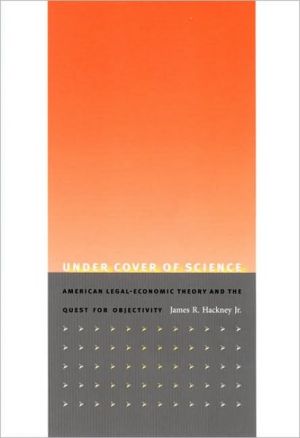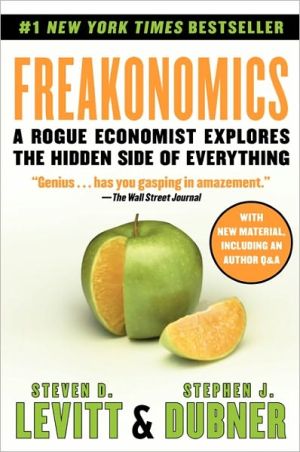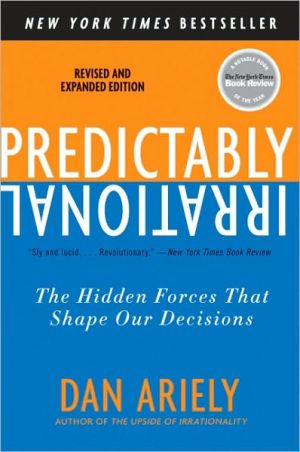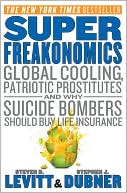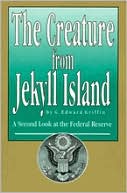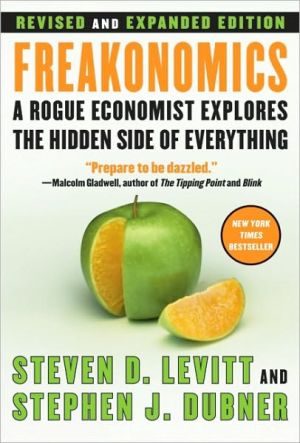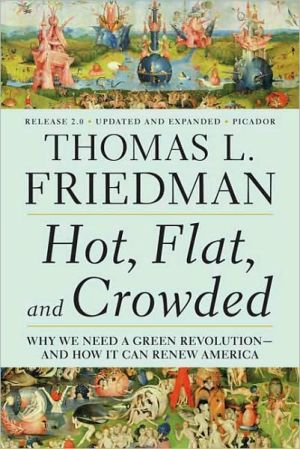Under Cover of Science: American Legal-Economic Theory and the Quest for Objectivity
For more than two decades, the law and economics movement has been one of the most influential and controversial schools of thought in American jurisprudence. In this authoritative intellectual history, James R. Hackney Jr. situates the modern law and economics movement within the trajectory of American jurisprudence from the early days of the Republic to the present. Hackney is particularly interested in the claims of objectivity or empiricism asserted by proponents of law and economics. He...
Search in google:
A critique of the Law & Economics movement, this book draws connections between conceptions of science and efforts at legitimating American legal theory as an objective enterprise.
UNDER COVER OF SCIENCE\ AMERICAN LEGAL-ECONOMIC THEORY AND THE QUEST FOR OBJECTIVITY \ \ By James R. Hackney Jr. \ Duke University Press\ Copyright © 2006 Duke University Press\ All right reserved.\ ISBN: 978-0-8223-3998-4 \ \ \ Chapter One\ MODERN SCIENCE, CLASSICAL THOUGHT, AND THE BIRTH OF AMERICAN LEGAL-ECONOMIC THEORY \ * Modernity is a complex concept. Stephen Toulmin has characterized it as having two distinct branches-literary and scientific. Initially sixteenth-century Renaissance literature, and its humanistic impulses, significantly shaped modernity. While literary musing strongly influenced modern intellectual thought in the West, our principal focus will be on the scientific contributions to modernity. In America, the prototypical modern state, the scientific ethos dominated legal discourse until recently. Classical legal theory highlights the point. Classical legal theory derives from classical thought (or the classical era)-seventeenth-century through early-nineteenth-century ideas concerning science, philosophy, economics, and law.\ Scientific modernism, or modern science, originates in the seventeenth century. Francis Bacon and René Descartes epitomize philosophical speculation on scientific method. They both promoted modern science as a powerful, all-encompassing worldview standing against religious zealotry, relativism (skepticism), and other perceived societal ills. Indeed, their influence on the modern mind can scarcely be underestimated. While they both held distinct views regarding scientific method, it is useful, before turning to their specific philosophical visions, to explore their similarities. It is only then that Sir Isaac Newton's grand contribution can be understood as reflecting Baconian and Cartesian ideas. Newtonian physics established science as the preeminent intellectual field and the discipline for all other fields to mimic, including law.\ A summary of the cultural and historical background to the seventeenth century is necessary to fully appreciate the tectonic shift represented by the rise of science. In the seventeenth century Europe was embroiled in political, cultural, and intellectual crises. The Thirty Years' War (1618-48) had brought to a head festering religious crises, which were manifested in the Reformation and led to brutal combat. Without the Roman Catholic Church as a touchstone for social cohesion (instead it was being invoked as a call to arms), there was cultural crisis. Catholic partisans, Erasmus of Rotterdam most prominently, set the intellectual foundation for the counter-Reformation, arguing that Protestant theology fell short because there was no way to mediate varying conceptions of religious truth. Individual interpretation necessarily led to religious nihilism. This religious skepticism was infectious.\ Philosophical skepticism reflected the general cultural crisis. Skepticism is widely recognized as setting in relief modern thought. If we mark the seventeenth century as modernity's starting point, the succeeding four centuries may be looked upon as an extended effort to respond to the skeptical impulse. To understand its import as the departure point for modernity, we first must sketch out the contours of skepticism.\ Sixteenth-century scholars were deeply interested in antiquity and Greek skepticism, particularly the writings of Sextus Empiricus. Empiricus and the later skeptics argued that human limitations with regard to knowledge acquisition through the senses made it impossible to divine universal truths. In attacking the quest for certainty, skeptics leveled an extensive critique against Aristotelian science. (Post Reformation, Aristotelian philosophy was also suspect because it had been adopted as Roman Catholicism's unofficial philosophy.) This critique extended the skeptical crisis to science-the very heart of the western intellectual tradition.\ Michel de Montaigne, the most influential sixteenth-century skeptic, was deeply influenced by Sextus Empiricus's writings. He took particular aim at claims to scientific certainty in his essay "Apology of Raymond Sebond." In stressing that sense-knowledge was uncertain, Montaigne struck at the burgeoning scientific revolution's core. His critique took on specific significance in a climate where Aristotelian science had been roundly criticized. Montaigne exemplified the sixteenth-century skeptical crisis, setting the stage for efforts to resurrect the quest for certainty and for modernity. Make no mistake-the stakes are high. Are we to accept the notion that claims to knowledge are tentative or will we assume the stance that we can conquer all doubt? It is the latter path that marks the initial trajectory of modernity, including American legal-economic theory.\ The path was laid out by two towering seventeenth-century figures in western intellectual history, Francis Bacon and René Descartes. They both begin by granting skeptics their initial suspicion that the senses are not infallible. However, they arrived, through different paths, at the conclusion that scientific certainty is indeed obtainable. The different styles make up the two dominant scientific conceptions in western thought: rationalism (represented by Descartes) and empiricism (represented by Bacon). Varying terminology may be used to express their ideas. For example, deductivism or reductionism will be used as a proxy for rationalism, and inductivism or experimentalism for empiricism. The central point is that two distinct scientific strands were developed to counter skepticism. Of course, this is a gross generalization that will be given a more nuanced treatment as we progress. Indeed, Descartes and Bacon each had room in his scientific method for tools championed by the other. However, there is a distinct emphasis in both Descartes's and Bacon's philosophies of science. More important than differences in their individual methods, both Descartes and Bacon took it as their grand quest to rescue western civilization from skepticism. In its place, they installed science as the antidote to cultural crisis.\ Descartes is, to say the least, an enigmatic figure in western intellectual history. While he is best known for his metaphysical stance, as articulated in his Meditations, it is arguable that his deepest influence lay in his views on scientific method. Meditations is based on a fictional character's intellectual musings or meditations over six days (there is one meditation for each day). Descartes's metaphysics, constructed through the meditations, were to underpin his previously devised method. The method placed science on the firm terrain of certitude. However, to establish this sure footing Descartes would first have to rebut the skeptical challenge. He had to have a metaphysics-a philosophical grounding for knowledge.\ Descartes is ingenious in his approach to slaying the skeptical dragon. In the Meditations he begins by having his fictional intellectual adopt an extreme skeptical stance. The strategy is to embrace the skeptical premise and nevertheless derive universal truth. Descartes begins in the First Meditation by calling into doubt all truths. Indeed, suspending belief even in God, he supposed that there might be a "great deceiver" who had wickedly tricked Descartes into believing falsehoods. Descartes could not even trust his senses, because they too might lead him astray. In keeping with a skeptical stance, all was called into question. This position was in direct opposition to Aristotelian philosophy, which depended on the external senses to underpin analysis. Nevertheless, Descartes realized that his own existence was the one thing that could not be doubted: thence the famous: "I am thinking, therefore I am." Descartes took this insight to the extreme, positing that he existed as a mind (a thing which thinks), not necessarily connected to a body (since he could be deceived as to its existence). The problem is that the mind is prone to error and thus cannot be trusted to direct Descartes to any other truths aside from his existence.\ Descartes knew that he must devise a truth criterion that would allow him to trust his thoughts. In the Third Meditation he reasons that he can take as true that which appears to him to be both clear and distinct. However, the "great deceiver" still poses a problem, which Descartes surmounts by reasoning that there must be a God and that God would not deceive his own creation. Although to the contemporary reader it may seem odd to invoke God to shore up a philosophical discussion, Descartes was a product and a captive of his times, a Catholic who had received a Jesuit education. The religious jousting of the seventeenth century was over different religious practices, not over whether God existed. Moreover, because of widespread religious persecution, it was prudent for a prominent intellectual to be considered a believer. And to some Descartes did not go far enough: even though he placed God prominently in the Meditations, theologians criticized him, arguing that his writings were inconsistent with church doctrine. Descartes's concern over these matters is manifested by his frequent attempts to gain approval from his former Jesuit teachers and other theologians.\ With God in place, the possibility for truth exists. However, God does not assure human infallibility. We are all still prone to error. To guard against false ideas, we have to strive for the same clarity and distinctness, later referred to as intuition in Rules for the Direction of our Native Intelligence, which had brought Descartes to a belief in God's existence. Descartes's method helps us discern what is clear and distinct. The world may be deceitful, but there is hope for truth. We may even, under certain conditions, rely on our senses to a limited degree. But it is the mind that holds the key to certainty. If we organize our thoughts well, we will be able to counteract our tendency toward error, but that requires much discipline. The discipline would be acquired through Descartes's method.\ Descartes had gone about setting out his method as early as 1628, when he drafted his methodological treatise Rules for the Direction of our Native Intelligence, predating Meditations by some thirteen years. However, instead of publishing Rules Descartes anonymously published his Discourse on Method in 1637, which proved to be one of the most important philosophical statements in the western tradition. Although a work dealing with science, Discourse on Method, which Descartes called a "fable," like Meditations is penned in a style more suited toward literary modernists such as Montaigne (demonstrating the blurred lines between literature and science), and in the popular language of French rather than the more scholastic Latin. Descartes also employs an autobiographical approach that invites the reader to take part in the process by which he derived his Rules for the Direction of our Native Intelligence.\ In Discourse on Method Descartes takes as his starting point the same doubt that animated Meditations. He must hold up his beliefs to the cold light of reason. Also foreshadowing Meditations, Descartes comes to the realization that he cannot doubt his own existence and accepts it as the first principle in his philosophy. From this first principle and other intuitions, Descartes goes on to examine "what were the first and most ordinary effects that could be deduced." Cartesian method is based on intuition and deduction. One might discern a naïve circularity in his argument. He states that his "reasonings follow each other in such a way that, as the last are demonstrated by the first, which are their causes, the first are proved, reciprocally, by the last, which are their effects." Nevertheless, Descartes attempts to safeguard himself from claims of circularity by recognizing that hypotheses must be tested against reality.\ While Discourse on Method is Descartes's most famous methodological statement, Descartes readily admits that it is sparse in detail. One must look to the Rules for the Direction of our Native Intelligence to flesh out his method. Descartes's purpose in writing the Rules was to demonstrate that science could be unified under one method-the Cartesian method. In this sense, his efforts exemplify the modernist scientific quest. Descartes is careful, in Rule II, to circumscribe the scientific enterprise by warning against attempts to do science in areas for which our knowledge-capacity is inadequate. It should not be undertaken in areas in which absolute certainty cannot be attained. Cartesian science leaves no room for probabilistic inquiry. Mathematics, a quintessential example of a Cartesian science, wholly embraces deductive reasoning. The deduction that Descartes accepts is not limited to abstract logic: mathematics also relies upon contemplation (or, as Descartes phrased it, enumeration), which in turn relies on something other than pure logic (specifically, memory) and therefore resembles inductive reasoning. Thus Descartes recognizes that the other knowledge base, experience, may uncover truths. However, induction is too susceptible to error (remember his opinion of sense data) to be much relied upon. This does not mean that mathematics is the only mode of scientific inquiry, but that all other sciences must attain its level of certitude-through deductivism or "universal mathematics."\ The foundation for Cartesian deductivism is the very same intuitionism alluded to in Discourse on Method. However, in Rules for the Direction of our Native Intelligence Descartes goes a lot further in explaining intuition. Most importantly, it is not derived by the senses or even imagination. It is arrived at through a "conception which an unclouded and attentive mind gives us so readily and distinctly that we are wholly freed from doubt about that which we can understand." Indeed this intuition is "more certain than deduction itself." It is also more fundamental to the method because it is the basis for first principles.\ Descartes represents the height of abstract thinking-championing the mathematics-centered science. His method stands in stark contrast to that proposed by the other towering seventeenth-century philosopher of science, Sir Francis Bacon. Thomas Kuhn maps out a useful dichotomy in thinking about the relationship between Descartes and Bacon, and their relative places in science historiography. Kuhn argues that on the one hand Descartes represents the mathematical tradition in science-taking the mantle from studies in antiquity of astronomy, harmonics, mathematics, optics, and statics. Bacon on the other hand represents the experimental tradition, stemming primarily from experimental activities that had long been incorporated into the western intellectual tradition (including Aristotelian philosophy). Descartes is reacting in great part to philosophical skepticism; Bacon's focus is on scientific practice. Descartes devises a new science to quiet the skeptical storm; Bacon's hope is so to discredit false scientific precepts-and hence rescue mankind. However, Bacon is fully aware that skepticism is "[by] far the greatest obstacle to the progress of the sciences."\ While Descartes wrote in a quasi-autobiographical style, Bacon wrote, in his most famous methodological treatise, Novum Organum, using aphorisms. Bacon understood the implications: "the first and earliest seekers after truth, with greater frankness and better success, were in the habit of casting the knowledge which they intended to keep for use, into aphorisms." The aphoristic style highlighted that Baconian method was a work in progress and not a fully completed theory. In fact, it was Bacon's fondest hope that others would use his method to initiate investigations. The Novum Organum is separated into two books. Book I discusses, in large part, the problems with existing methods and the need for Bacon's new science. Book II, which will only be briefly taken up later, lays out the new method.\ All science, according to Bacon, had adopted in one form or another the wrong method in obtaining truth: "[T]he sciences we now have are nothing more than nice arrangements of things already discovered, not methods of discovery or pointers to new works." Bacon looks disparagingly at the axiomatic logic championed by the schoolmen as well as "ordinary" induction. However, his greatest scorn is left for the logicians who attempt to arrive at knowledge through deductively reasoning from first principles-the Cartesian method.\ (Continues...)\ \ \ \ \ Excerpted from UNDER COVER OF SCIENCE by James R. Hackney Jr. Copyright © 2006 by Duke University Press. Excerpted by permission.\ All rights reserved. No part of this excerpt may be reproduced or reprinted without permission in writing from the publisher.\ Excerpts are provided by Dial-A-Book Inc. solely for the personal use of visitors to this web site. \ \
Acknowledgments ixPrologue: The Structure of American Legal-Economic Theory xiiiModern Science, Classical Thought, and the Birth of American Legal-Economic Theory 1The Pragmatic Reconstruction of American Legal-Economic Theory 39Neoclassicism and the Reprise of Formalism 81The Dissolution of American Legal-Economic Theory 121Epilogue: Gazing into the Future and Our Postmodern Times 157Notes 175Index 227
\ From the Publisher“Under Cover of Science fills a genuine gap in the literature by providing a thorough overview of the relationship between developments in scientific thought and developments in legal thought. That there is a relationship has been obvious to several generations of legal historians, and there are lots and lots of references and suggestions about how it might work. But until now no one that I know of has made a focused effort to lay it all out.”—Duncan Kennedy, Harvard Law School\ “Under Cover of Science is a sweeping intellectual history that relates the development of law and economics to science and its claims to objectivity. James R. Hackney Jr. ranges from Newton to Darwin to Einstein, and from classical economics to institutional economics to neoclassical economics. I cannot think of another book that so extensively explores the history of the interrelations of law and economics.”—Stephen M. Feldman, author of American Legal Thought from Premodernism to Postmodernism: An Intellectual Voyage\ “James R. Hackney Jr. has written the definitive intellectual history of the origins of the law and economics movement. Weaving rich separate histories of legal and economic thought into broader changes in the governing premises of science and philosophy, Hackney has offered a powerful account of the rise of this influential school of thought.”—Morton Horwitz, Harvard Law School\ “James R. Hackney Jr.’s book does a fine job of relating the evolution of jurisprudential thinking about one important area of conventional lawyers’ law, namely accident law, to the philosophical ‘surround,’ showing how changes in philosophy have influenced the evolution of legal thought, with specific reference to the now-dominant economic vein in that thought.”—Richard A. Posner, Judge, United States Seventh Circuit Court of Appeals, and Senior Lecturer, University of Chicago Law School\ \ \
